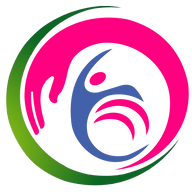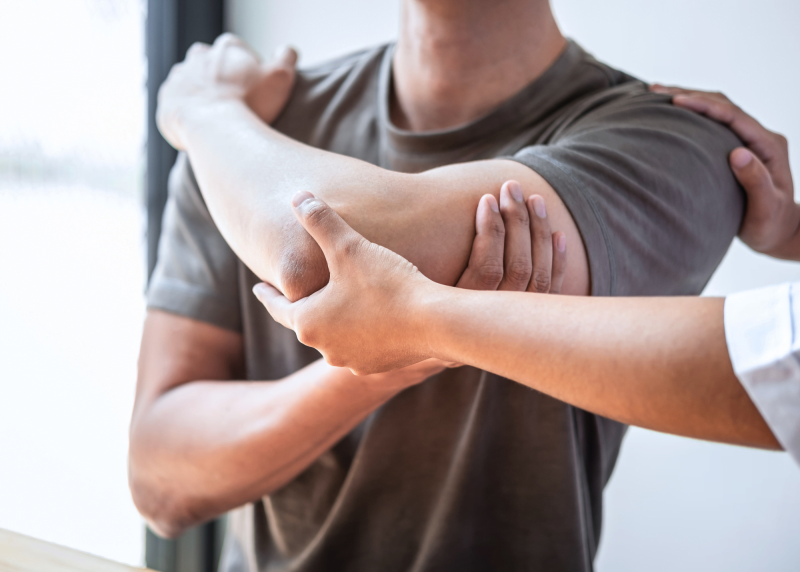Rotator Cuff Injury? Physiotherapy to the Rescue!
Introduction
Shoulder pain is more than just a minor inconvenience, especially when caused by a rotator cuff injury. It can limit everyday activities like combing your hair, reaching for objects, or sleeping on your side.
Whether you’re an athlete, office worker, or active adult, ignoring the pain can worsen the condition. But here’s the good news: physiotherapy is one of the best non-surgical treatments for rotator cuff injuries.
Rehabilitation plays a fundamental role in managing rotator cuff pathology, both in conservative and surgical cases. It can yield excellent results for tendinopathies without rupture, partial tears (<50% tendon thickness), chronic full-thickness tears in elderly patients, and irreparable tears. It also serves as an essential adjunct before or after surgery.
In this blog, we’ll explore:
- What a rotator cuff injury is
- Common symptoms and causes
- How physiotherapy helps
- Effective exercises for recovery
- How to prevent long-term damage
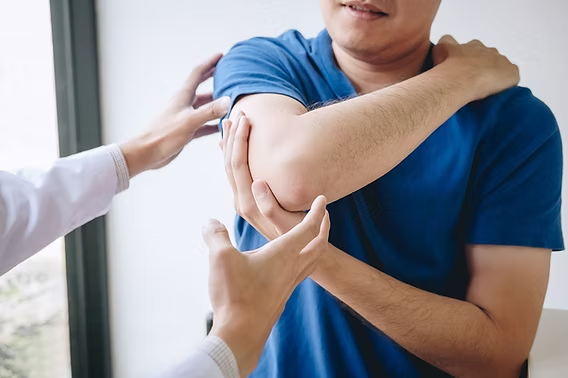
What Is a Rotator Cuff Injury?
The rotator cuff is a group of four muscles and tendons that keep your shoulder stable and help you lift or rotate your arm. Injuries may include:
- Tendinitis (inflammation)
- Partial tears
- Complete tears

Common Causes
- Repetitive overhead movements (e.g., lifting, painting, sports)
- Sudden trauma (falling on an outstretched hand)
- Poor posture and weak muscles
- Age-related degeneration (especially after 40)

Symptoms to Watch For
- Shoulder pain when lifting or rotating the arm
- Weakness or limited motion
- Pain at night or while lying on one side
- Clicking, cracking, or popping sounds
- Reduced ability to perform daily tasks
Note: Early physiotherapy can stop the injury from worsening.
Postoperative Rehabilitation
Post-surgery, the goal is to promote tendon healing, restore ROM and strength, and minimize stiffness. Despite many studies, no consensus exists on the optimal protocol. Three main approaches are used:
- Strict Immobilization (first 4–6 weeks)
- Early Passive Motion (EPM)
- Early Active Motion (EAM)
Evidence shows no significant long-term differences in ROM, functional outcomes, or re-tear rates between protocols. Early motion offers faster ROM recovery but similar healing rates compared to delayed motion.
Five-Phase Rehabilitation Protocol
| Phase | Weeks | Key Focus |
|---|---|---|
| 1 | 0–2 | Strict immobilization; distal hand & wrist AROM |
| 2 | 2–6 | Protected PROM → AAROM (4–6 wks); elbow AROM |
| 3 | 6–12 | Progress AAROM → AROM; pain-free motion |
| 4 | 12–20 | Strengthening & endurance (30–49% supraspinatus EMG activity) |
| 5 | 20–26 | Advanced strengthening (>50% EMG activity) |
Failed Rotator Cuff Repair
Failure may present as pain, loss of function, or retear (20% incidence). Sugaya classification distinguishes:
- Type 2–3: Tendinopathy (no discontinuity)
- Type 4–5: Retear/discontinuity
Management:
- Tendinopathy (Types 2–3): Eccentric exercises, shockwave therapy, PRP, electrotherapy; goal = tendon healing via controlled loading.
- Retear (Types 4–5): Options include revision surgery, tendon transfer, superior capsular reconstruction, or non-operative rehabilitation focusing on deltoid and scapular stabilization for compensation.

How Physiotherapy Helps
Physiotherapy not only relieves pain but also treats the root cause of the injury.
1. Pain Relief & Inflammation Control
- TENS or ultrasound therapy
- Ice therapy for swelling
- Manual therapy to release tight muscles
2. Improving Mobility
- Gentle stretching
- Joint mobilization
- Pendulum movements
3. Strength Training
- Targeted exercises to rebuild rotator cuff strength
- Scapular and upper back stabilization
4. Postural Correction
- Desk ergonomics guidance
- Exercises to align shoulder and spine posture
5. Preventing Future Injuries
- Movement education
- Strengthening surrounding muscles
- Correcting faulty biomechanics
Common Physiotherapy Exercises
(Always perform under professional supervision)
Pendulum Swings: Promotes gentle movement and circulation
Isometric External Rotation: Activates rotator cuff without stressing it
Wall Walks: Restores range of motion
Resistance Band Rows: Strengthens stabilizing muscles
Scapular Retractions: Improves posture and shoulder control
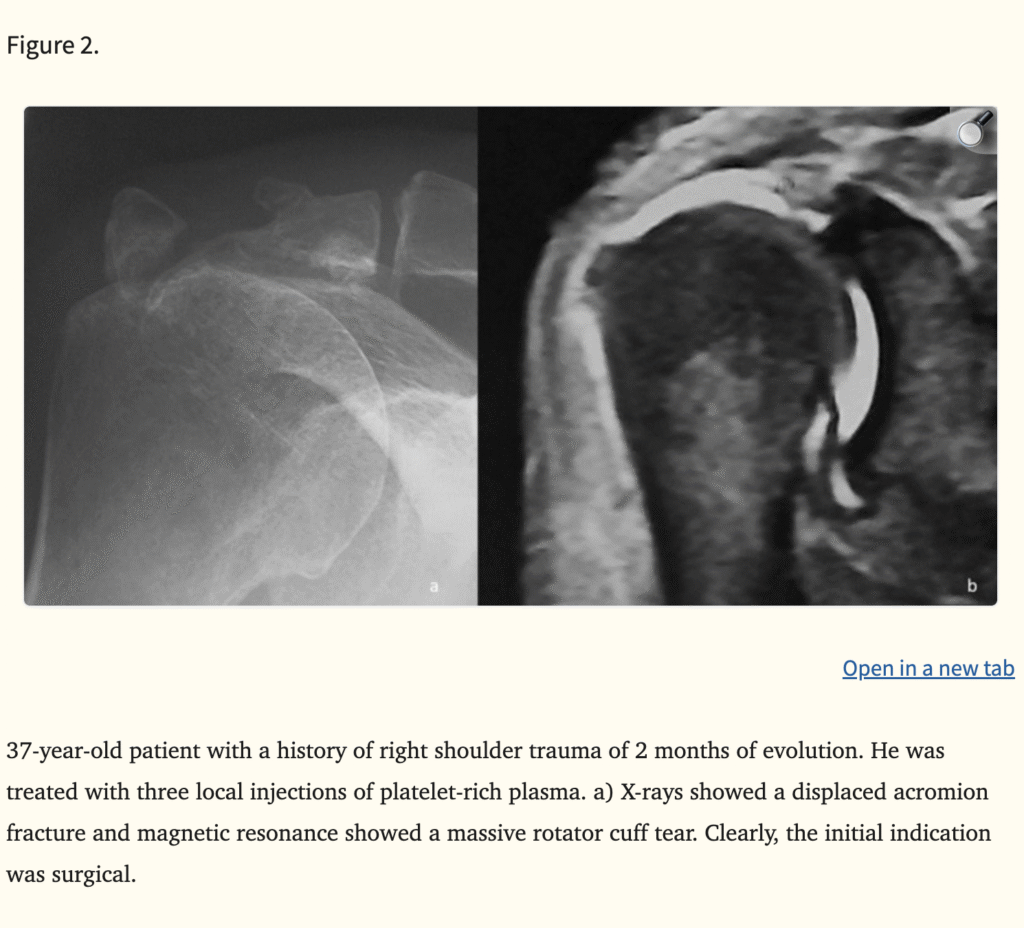
Rehabilitation is vital across all stages of rotator cuff management—conservative, postoperative, and failed repair. Although protocols vary, evidence supports a personalized, phase-based program emphasizing gradual load progression, patient education, and functional adaptation to optimize outcomes.
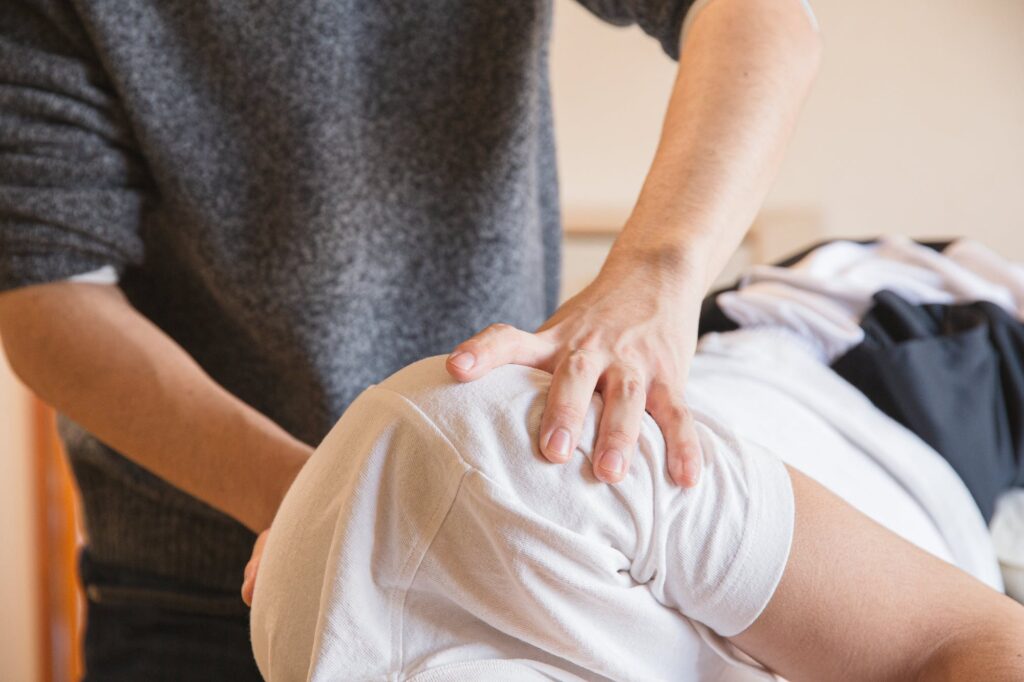
How Long Does Recovery Take?
- Mild tendinitis: 3-6 weeks
- Partial tear: 6-12 weeks
- Post-surgery: 4-6 months
Your recovery depends on:
- Severity of injury
- Early start of physiotherapy
- Consistency with your home program

Risks of Avoiding Treatment
- Risk of full tendon tear
- Frozen shoulder (adhesive capsulitis)
- Chronic pain and stiffness
- Potential need for surgery later

Frequently Asked Questions (FAQs)
Q1. Can a rotator cuff tear heal without surgery?
Yes, many partial tears and inflamed tendons respond well to physiotherapy.
Q2. When should I see a physiotherapist?
If pain lasts more than a few days or movement becomes limited, consult a physiotherapist early.
Q3. Will physiotherapy hurt?
Some exercises may cause mild discomfort, but a skilled therapist will keep you within safe limits.
Q4. Can I do these exercises at home?
Yes, but only those prescribed and demonstrated by your physiotherapist to avoid worsening the injury.
Trust FitoFine for Natural Shoulder Recovery
At FitoFine, our licensed physiotherapists provide personalized care to help you recover naturally from rotator cuff injuries. Whether you’re dealing with a sports injury or age-related shoulder pain, our evidence-based methods focus on pain relief, function restoration, and long-term prevention.
Email: fitofine.in@gmail.com
Website: www.fitofine.com
Phone/WhatsApp: +91 6295115701
Timings:
Mon to Sat: 5:00 PM – 10:00 PM
Sunday: Closed
Start your recovery with expert guidance today!
